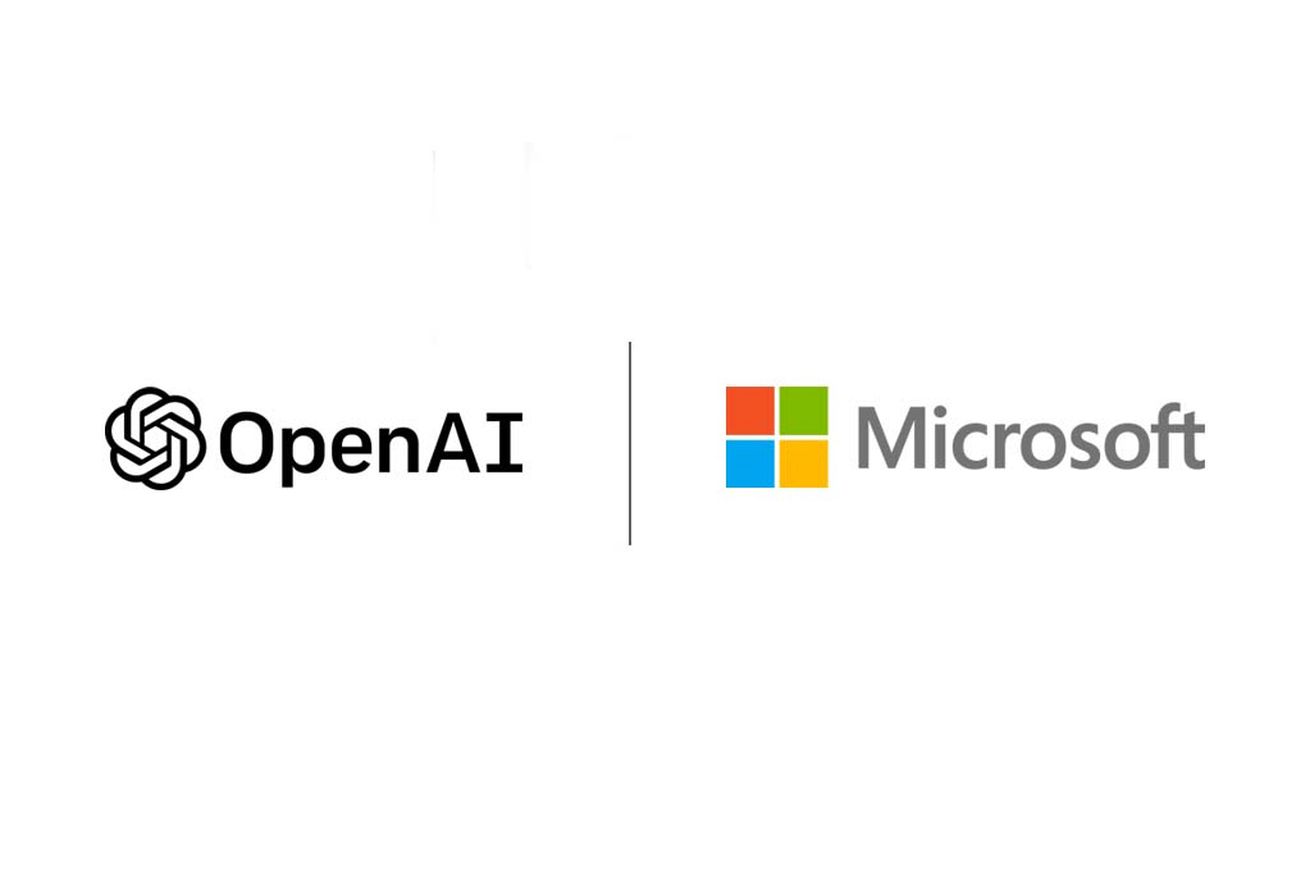AI Security
The Hidden Rules: Securing Your AI’s Privacy

We’ve all heard the saying, ‘knowledge is power.’ However, when it comes to AI, the focus is not only on what we know, but also on how we safeguard it.
In the world of data privacy, there are hidden rules that govern the security of our AI systems. From understanding data protection regulations to ensuring transparency in decision-making, we must navigate a complex landscape to safeguard our AI’s privacy.
In this article, we’ll dive into the intricate details and strategies for securing your AI’s privacy.
Key Takeaways
- Data anonymization techniques are important for securing AI’s privacy.
- Balancing the benefits of data anonymization with retaining useful information is a challenge.
- Compliance with data protection regulations is crucial for ensuring AI’s privacy.
- User consent and control over data usage are essential for protecting privacy in AI systems.
Understanding Data Protection Regulations
We need to understand data protection regulations to ensure the privacy of our AI.

Data anonymization techniques play a crucial role in safeguarding individual privacy rights in the age of AI. Anonymization involves removing personally identifiable information from datasets, making it nearly impossible to link the data to specific individuals. This process helps mitigate the risk of unauthorized access and misuse of personal data, as well as the potential for discriminatory or biased outcomes.
However, it’s important to note that complete anonymization is often challenging due to the potential for re-identification. Therefore, organizations must balance the benefits of data anonymization with the need to retain useful information for AI systems.
Compliance with data protection regulations is imperative to avoid legal repercussions and maintain public trust. By understanding and adhering to these regulations, we can ensure the responsible and ethical use of AI while safeguarding individual privacy rights.
Privacy Considerations for AI Systems
When considering privacy considerations for AI systems, there are three key points that require attention.

First, data protection laws play a crucial role in ensuring the privacy of individuals whose data is being processed by AI systems.
Second, the ethical implications of AI must be carefully examined to address potential privacy concerns and ensure that the technology is used responsibly.
Lastly, user consent and control are essential factors in maintaining privacy, as individuals should have the right to understand and control how their data is being used by AI systems.
Data Protection Laws
Implementing robust data protection laws is essential for safeguarding the privacy of AI systems. Privacy considerations for AI systems must address the potential risks of data breaches and ensure effective data minimization techniques.

To understand the importance of data protection laws in relation to AI systems, consider the following:
- Regulatory Compliance: Data protection laws ensure that AI systems comply with legal requirements, protecting the privacy rights of individuals.
- Consent and Transparency: Laws require AI systems to obtain informed consent and provide clear information about data collection and processing.
- Data Breach Notification: Laws mandate timely reporting of data breaches, ensuring that affected individuals and authorities are notified promptly.
- Data Minimization: AI systems must adhere to data minimization principles, limiting the collection and retention of personal data to only what’s necessary.
- Accountability and Enforcement: Data protection laws establish accountability mechanisms and enforcement measures to ensure compliance.
Ethical Implications of AI
To delve into the ethical implications of AI, we must consider the privacy considerations for AI systems. As AI becomes more prevalent in our society, it is crucial to address the ethical considerations surrounding its use, particularly in relation to privacy. AI systems have the potential to collect vast amounts of personal data, raising concerns about how this information is stored, accessed, and used. To ensure ethical practices, AI accountability is essential, requiring organizations to establish clear guidelines and frameworks for protecting user privacy. This includes implementing robust data protection measures, obtaining informed consent, and providing individuals with control over their personal information. By prioritizing privacy considerations, we can foster trust in AI systems and mitigate the risks associated with unauthorized data access and misuse.
| Ethical Considerations | AI Accountability |
|---|---|
| Protecting user privacy through robust data protection measures | Establishing clear guidelines and frameworks |
| Obtaining informed consent for data collection and usage | Providing individuals with control over their personal information |
| Mitigating risks associated with unauthorized data access and misuse | Fostering trust in AI systems |
User Consent and Control
Continuing our exploration of the ethical implications of AI, let’s now delve into the crucial topic of user consent and control in ensuring privacy for AI systems.
Maintaining user awareness and providing control over their personal data is essential to uphold privacy standards. Here are some key considerations:

- Informed Consent: Users should have a clear understanding of how their data will be collected, used, and shared by AI systems.
- Granular Control: Users should have the ability to choose the specific types of data they’re comfortable sharing with AI systems.
- Transparency: AI systems should be transparent about the data they collect, how it’s processed, and who’s access to it.
- Data Minimization: AI systems should only collect and retain the minimum amount of data necessary for their intended purposes.
- Data Ownership: Users should have ownership and control over their personal data, including the ability to access, modify, and delete it.
Compliance With GDPR and CCPA
When it comes to compliance with GDPR and CCPA, there are three key points to consider:
- Data protection requirements: This involves ensuring that the AI system is designed to safeguard personal data and implement necessary security measures.
- User consent obligations: This refers to obtaining explicit consent from individuals before processing their personal data.
- Privacy policy compliance: This entails making sure that the AI system’s privacy policy provides clear and accurate information about data collection, usage, and storage practices.
Data Protection Requirements
Our AI’s compliance with GDPR and CCPA data protection requirements is crucial for securing its privacy. To ensure that our AI adheres to these regulations, we’ve implemented the following measures:
- Data Encryption: All sensitive user data is encrypted both at rest and in transit, providing an additional layer of protection against unauthorized access.
- Data Minimization: We only collect and retain the minimum amount of data necessary for our AI to function effectively, reducing the risk of data breaches and unauthorized use.
- Regular Audits: We conduct regular audits to assess our compliance with GDPR and CCPA requirements, identifying any potential gaps and taking corrective actions promptly.
- Privacy Policies: Our privacy policies are transparent and easily accessible, providing users with clear information on how their data is collected, used, and protected.
- Data Retention Periods: We strictly adhere to the specified data retention periods outlined in GDPR and CCPA, ensuring that data isn’t kept for longer than necessary.
By implementing these measures, we prioritize the privacy and security of our AI and user data.
Now let’s delve into the next topic: user consent obligations.

User Consent Obligations
To fulfill the user consent obligations under GDPR and CCPA, we ensure that our AI obtains explicit consent from individuals before collecting and processing their personal data. User consent management is a critical aspect of our AI’s privacy framework.
We’ve implemented a robust system that allows users to provide their consent through consent forms. These forms clearly explain the purpose and scope of data collection, processing, and storage. We also provide users with the option to withdraw their consent at any time.
Our AI system maintains a record of all user consents, ensuring compliance with GDPR and CCPA requirements. We regularly review and update our consent forms to align with evolving regulations and privacy best practices. By prioritizing user consent obligations, we strive to build trust and respect individual privacy rights.
Privacy Policy Compliance
In ensuring privacy policy compliance with GDPR and CCPA, we actively monitor and adhere to the regulations and requirements surrounding the collection and processing of personal data by our AI system. This ensures that we uphold the highest standards of data privacy regulations.

To achieve this, we’ve implemented the following measures:
- Regularly reviewing and updating our privacy policy guidelines to align with the latest legal requirements.
- Conducting thorough audits to assess our data collection and processing practices for compliance.
- Implementing strict access controls and encryption measures to safeguard personal data.
- Providing users with clear and concise information about the purposes and methods of data processing.
- Offering users the ability to exercise their rights under GDPR and CCPA, such as the right to access, rectify, and erase their personal data.
The Importance of Consent in AI Data Collection
When collecting data for AI, obtaining user consent is an essential step in ensuring privacy and ethical practices. User consent serves as a cornerstone in the principles of data protection and privacy. It provides individuals with the autonomy to decide how their personal information is used and shared. Consent ensures that individuals are aware of the purpose and scope of data collection, promoting transparency and trust between users and AI systems.
Additionally, consent plays a crucial role in upholding data anonymization and data minimization practices. By obtaining explicit consent, organizations can ensure that data collected is relevant, limited to what’s necessary, and stripped of any identifying information. This ensures that user privacy is respected and that potential risks associated with data exposure are minimized.
Moving forward, let’s now explore the next section on safeguarding personal information in AI algorithms.

Safeguarding Personal Information in AI Algorithms
Our approach to safeguarding personal information in AI algorithms involves implementing robust security measures to protect user data. We prioritize the privacy and confidentiality of individuals by utilizing advanced techniques such as data anonymization and secure data storage.
Here are five key measures we employ:
- Encryption: We employ strong encryption algorithms to ensure that personal information remains protected during storage and transmission.
- Access Control: We implement strict access controls to limit data access to authorized individuals only, reducing the risk of unauthorized data exposure.
- Regular Audits: We conduct regular audits to assess the security of our AI algorithms and identify any vulnerabilities or potential breaches.
- Data Minimization: We employ strategies to minimize the collection and retention of personal information, reducing the overall risk of exposure.
- User Control: We provide users with clear and transparent options to control the use of their personal information, such as the ability to opt-out of data collection or delete their data from our systems.
Ensuring Transparency in AI Decision-Making
To ensure transparency in AI decision-making, we prioritize providing clear explanations for the reasoning behind our algorithms’ outcomes. It is crucial to establish ethics in AI decision making and ensure accountability in AI algorithms. By providing transparency, we empower users to understand how and why decisions are made, enabling them to trust the system and hold it accountable for its actions. A key aspect of transparency is explaining the ethical considerations taken into account during decision-making processes. This allows users to assess the fairness and bias of the algorithms. To illustrate the importance of transparency, consider the following table showcasing the ethical principles we adhere to when designing and implementing AI algorithms:
| Ethical Principle | Description | Example |
|---|---|---|
| Fairness | Treating all individuals without discrimination or bias | Ensuring equal access to resources for all users |
| Accountability | Taking responsibility for the consequences of AI decisions | Implementing mechanisms to review and correct errors |
| Transparency | Providing clear explanations of the reasoning behind AI decisions | Displaying the factors considered in determining loan approvals |
Auditing and Monitoring AI Systems for Privacy Compliance
We regularly monitor and audit our AI systems to ensure privacy compliance. This involves employing various auditing techniques and conducting privacy impact assessments.

Here are five key practices we follow:
- Continuous Monitoring: We establish robust monitoring systems that track data access, usage, and storage to identify any potential privacy breaches or vulnerabilities in real-time.
- Regular Audits: We conduct thorough audits of our AI systems to assess their compliance with privacy regulations and to identify any gaps or areas for improvement.
- Risk Assessment: We perform comprehensive privacy impact assessments to identify and mitigate potential risks to individuals’ privacy throughout the AI system’s lifecycle.
- Data Classification: We classify data based on its sensitivity and implement appropriate privacy measures to protect personal and sensitive information.
- Documentation and Reporting: We maintain detailed records of our auditing activities and provide regular reports to stakeholders, ensuring transparency and accountability.
Frequently Asked Questions
How Can Organizations Ensure That the Personal Data Collected by AI Systems Is Stored and Processed in Compliance With Data Protection Regulations?
To ensure compliance with data protection regulations, organizations must address privacy implications and overcome compliance challenges when storing and processing personal data collected by AI systems.
What Are the Potential Privacy Risks Associated With AI Systems, and How Can They Be Mitigated?
Privacy risks associated with AI systems include data breaches, unauthorized access, and algorithmic bias. Mitigation techniques involve encryption, access controls, and regular audits. Protecting privacy is crucial for maintaining trust and compliance with data protection regulations.
What Steps Can Organizations Take to ObtAIn Valid Consent From Individuals for Collecting and Using Their Personal Data in AI Systems?
To obtain valid consent, organizations must follow privacy regulations by clearly explaining the purpose of data collection in AI systems and ensuring individuals understand the implications. This helps protect privacy rights and builds trust with users.

How Can Personal Information Be Protected Within AI Algorithms to Prevent Unauthorized Access or Misuse?
To protect personal information within AI algorithms, we employ robust data encryption techniques. We also implement stringent access control measures, ensuring only authorized individuals can access and utilize the data, thus preventing unauthorized access or misuse.
What Measures Can Be Implemented to Ensure Transparency in the Decision-Making Process of AI Systems, Especially in Cases Where They Impact Individuals’ Privacy?
To ensure transparency in AI decision-making, especially when it impacts privacy, we can implement measures such as robust audit trails, explainable AI models, and privacy-enhancing technologies that safeguard personal information while providing insights into the decision-making process.
Conclusion
In conclusion, securing privacy in AI systems is crucial for compliance with data protection regulations such as GDPR and CCPA. Consent plays a significant role in data collection, and personal information must be safeguarded in AI algorithms.
Transparency in AI decision-making is essential, and regular auditing and monitoring ensure privacy compliance. By adhering to these principles, we can navigate the hidden rules of AI privacy and protect individuals’ data in this rapidly advancing technological landscape.

It’s like wearing armor to shield our digital identities.
Hanna is the Editor in Chief at AI Smasher and is deeply passionate about AI and technology journalism. With a computer science background and a talent for storytelling, she effectively communicates complex AI topics to a broad audience. Committed to high editorial standards, Hanna also mentors young tech journalists. Outside her role, she stays updated in the AI field by attending conferences and engaging in think tanks. Hanna is open to connections.
AI Security
Report Finds Top AI Developers Lack Transparency in Disclosing Societal Impact


Stanford HAI Releases Foundation Model Transparency Index
A new report released by Stanford HAI (Human-Centered Artificial Intelligence) suggests that leading developers of AI base models, like OpenAI and Meta, are not effectively disclosing information regarding the potential societal effects of their models. The Foundation Model Transparency Index, unveiled today by Stanford HAI, evaluated the transparency measures taken by the makers of the top 10 AI models. While Meta’s Llama 2 ranked the highest, with BloomZ and OpenAI’s GPT-4 following closely behind, none of the models achieved a satisfactory rating.
Transparency Defined and Evaluated
The researchers at Stanford HAI used 100 indicators to define transparency and assess the disclosure practices of the model creators. They examined publicly available information about the models, focusing on how they are built, how they work, and how people use them. The evaluation considered whether companies disclosed partners and third-party developers, whether customers were informed about the use of private information, and other relevant factors.
Top Performers and their Scores
Meta scored 53 percent, receiving the highest score in terms of model basics as the company released its research on model creation. BloomZ, an open-source model, closely followed at 50 percent, and GPT-4 scored 47 percent. Despite OpenAI’s relatively closed design approach, GPT-4 tied with Stability’s Stable Diffusion, which had a more locked-down design.
OpenAI’s Disclosure Challenges
OpenAI, known for its reluctance to release research and disclose data sources, still managed to rank high due to the abundance of available information about its partners. The company collaborates with various companies that integrate GPT-4 into their products, resulting in a wealth of publicly available details.

Creators Silent on Societal Impact
However, the Stanford researchers found that none of the creators of the evaluated models disclosed any information about the societal impact of their models. There is no mention of where to direct privacy, copyright, or bias complaints.
Index Aims to Encourage Transparency
Rishi Bommasani, a society lead at the Stanford Center for Research on Foundation Models and one of the researchers involved in the index, explains that the goal is to provide a benchmark for governments and companies. Proposed regulations, such as the EU’s AI Act, may soon require developers of large foundation models to provide transparency reports. The index aims to make models more transparent by breaking down the concept into measurable factors. The group focused on evaluating one model per company to facilitate comparisons.
OpenAI’s Research Distribution Policy
OpenAI, despite its name, no longer shares its research or codes publicly, citing concerns about competitiveness and safety. This approach contrasts with the large and vocal open-source community within the generative AI field.
The Verge reached out to Meta, OpenAI, Stability, Google, and Anthropic for comments but has not received a response yet.
Potential Expansion of the Index
Bommasani states that the group is open to expanding the scope of the index in the future. However, for now, they will focus on the 10 foundation models that have already been evaluated.
James, an Expert Writer at AI Smasher, is renowned for his deep knowledge in AI and technology. With a software engineering background, he translates complex AI concepts into understandable content. Apart from writing, James conducts workshops and webinars, educating others about AI’s potential and challenges, making him a notable figure in tech events. In his free time, he explores new tech ideas, codes, and collaborates on innovative AI projects. James welcomes inquiries.
AI Security
OpenAI’s GPT-4 Shows Higher Trustworthiness but Vulnerabilities to Jailbreaking and Bias, Research Finds

New research, in partnership with Microsoft, has revealed that OpenAI’s GPT-4 large language model is considered more dependable than its predecessor, GPT-3.5. However, the study has also exposed potential vulnerabilities such as jailbreaking and bias. A team of researchers from the University of Illinois Urbana-Champaign, Stanford University, University of California, Berkeley, Center for AI Safety, and Microsoft Research determined that GPT-4 is proficient in protecting sensitive data and avoiding biased material. Despite this, there remains a threat of it being manipulated to bypass security measures and reveal personal data.

Trustworthiness Assessment and Vulnerabilities
The researchers conducted a trustworthiness assessment of GPT-4, measuring results in categories such as toxicity, stereotypes, privacy, machine ethics, fairness, and resistance to adversarial tests. GPT-4 received a higher trustworthiness score compared to GPT-3.5. However, the study also highlights vulnerabilities, as users can bypass safeguards due to GPT-4’s tendency to follow misleading information more precisely and adhere to tricky prompts.
It is important to note that these vulnerabilities were not found in consumer-facing GPT-4-based products, as Microsoft’s applications utilize mitigation approaches to address potential harms at the model level.
Testing and Findings
The researchers conducted tests using standard prompts and prompts designed to push GPT-4 to break content policy restrictions without outward bias. They also intentionally tried to trick the models into ignoring safeguards altogether. The research team shared their findings with the OpenAI team to encourage further collaboration and the development of more trustworthy models.

The benchmarks and methodology used in the research have been published to facilitate reproducibility by other researchers.
Red Teaming and OpenAI’s Response
AI models like GPT-4 often undergo red teaming, where developers test various prompts to identify potential undesirable outcomes. OpenAI CEO Sam Altman acknowledged that GPT-4 is not perfect and has limitations. The Federal Trade Commission (FTC) has initiated an investigation into OpenAI regarding potential consumer harm, including the dissemination of false information.
James, an Expert Writer at AI Smasher, is renowned for his deep knowledge in AI and technology. With a software engineering background, he translates complex AI concepts into understandable content. Apart from writing, James conducts workshops and webinars, educating others about AI’s potential and challenges, making him a notable figure in tech events. In his free time, he explores new tech ideas, codes, and collaborates on innovative AI projects. James welcomes inquiries.
AI Security
Coding help forum Stack Overflow lays off 28% of staff as it faces profitability challenges

Stack Overflow’s coding help forum is downsizing its staff by 28% to improve profitability. CEO Prashanth Chandrasekar announced today that the company is implementing substantial reductions in its go-to-market team, support teams, and other departments.
Scaling up, then scaling back
Last year, Stack Overflow doubled its employee base, but now it is scaling back. Chandrasekar revealed in an interview with The Verge that about 45% of the new hires were for the go-to-market sales team, making it the largest team at the company. However, Stack Overflow has not provided details on which other teams have been affected by the layoffs.
Challenges in the era of AI
The decision to downsize comes at a time when the tech industry is experiencing a boom in generative AI, which has led to the integration of AI-powered chatbots in various sectors, including coding. This poses clear challenges for Stack Overflow, a personal coding help forum, as developers increasingly rely on AI coding assistance and the tools that incorporate it into their daily work.

Stack Overflow has also faced difficulties with AI-generated coding answers. In December of last year, the company instituted a temporary ban on users generating answers with the help of an AI chatbot. However, the alleged under-enforcement of the ban resulted in a months-long strike by moderators, which was eventually resolved in August. Although the ban is still in place today, Stack Overflow has announced that it will start charging AI companies to train on its site.
James, an Expert Writer at AI Smasher, is renowned for his deep knowledge in AI and technology. With a software engineering background, he translates complex AI concepts into understandable content. Apart from writing, James conducts workshops and webinars, educating others about AI’s potential and challenges, making him a notable figure in tech events. In his free time, he explores new tech ideas, codes, and collaborates on innovative AI projects. James welcomes inquiries.
-

 AI News4 weeks ago
AI News4 weeks agoAI-Assisted Grant Writing: Improving Success Rates for Educational Institutions
-

 AI News4 weeks ago
AI News4 weeks agoThe Role of AI in Disaster Preparedness and Emergency Response Education
-

 AI News4 weeks ago
AI News4 weeks agoThe Impact of AI on Privacy Laws and Regulations
-

 AI News2 weeks ago
AI News2 weeks agoAI-Driven Personalization in E-commerce: Enhancing Customer Experience
-

 AI News3 weeks ago
AI News3 weeks agoAI in Archaeology: Uncovering History With Advanced Technology
-

 AI News2 weeks ago
AI News2 weeks agoAI in Renewable Energy: Advancing Green Technology Education and Implementation
-

 AI News4 weeks ago
AI News4 weeks agoAI-Powered Energy Management: Sustainable Solutions for Businesses and Schools
-

 AI News3 weeks ago
AI News3 weeks agoAI in Library Sciences: Transforming Information Management and Access














